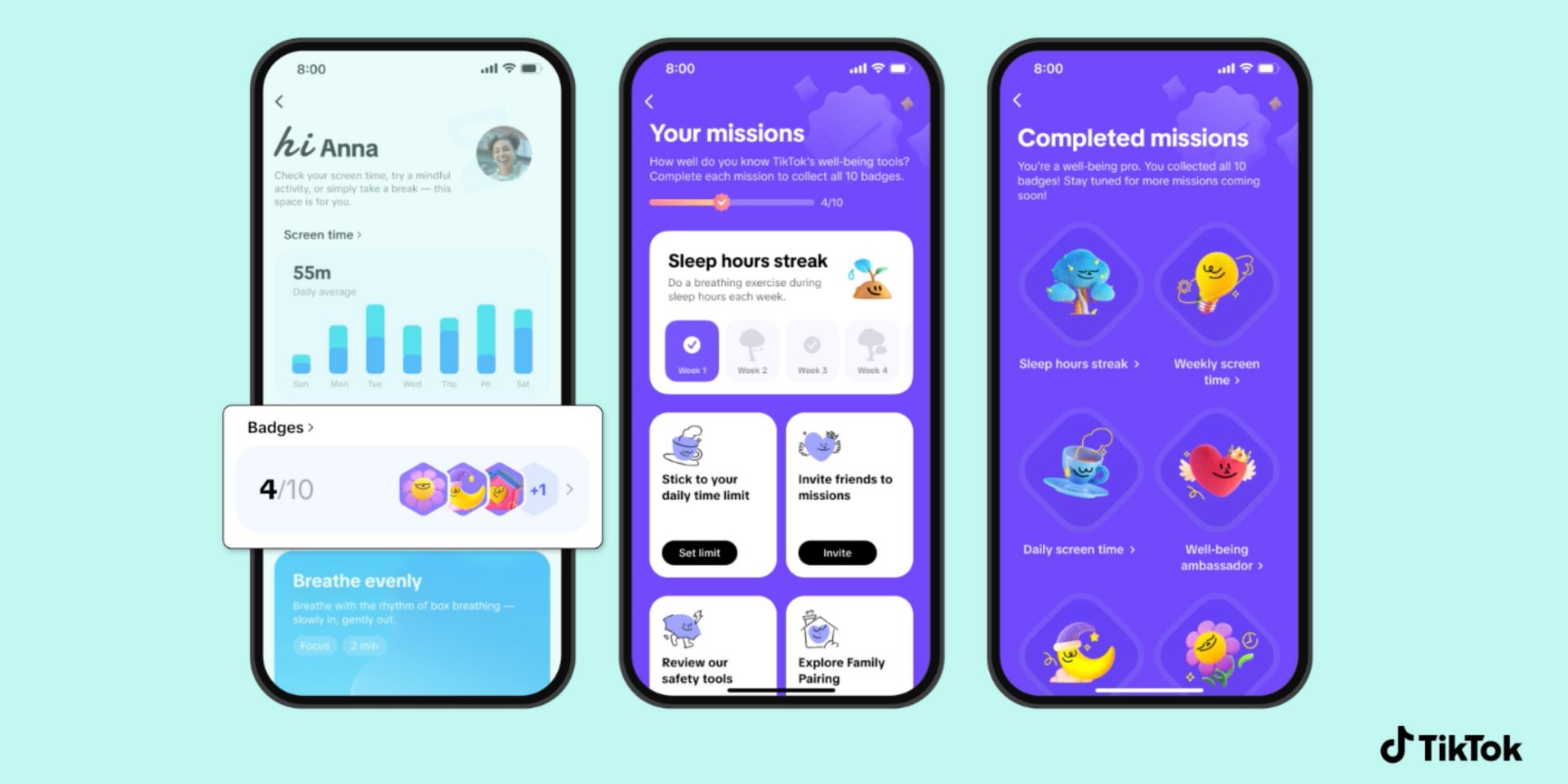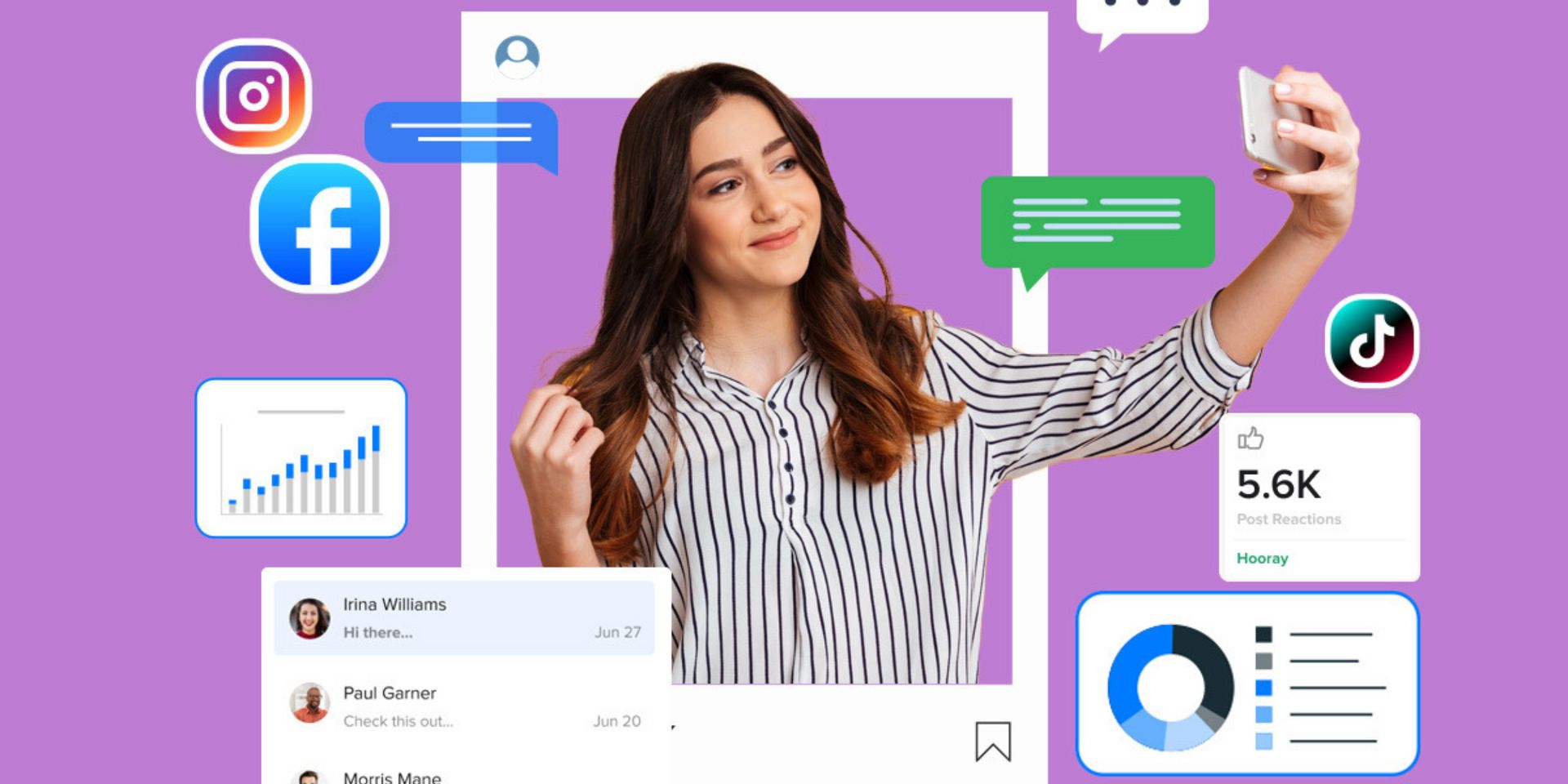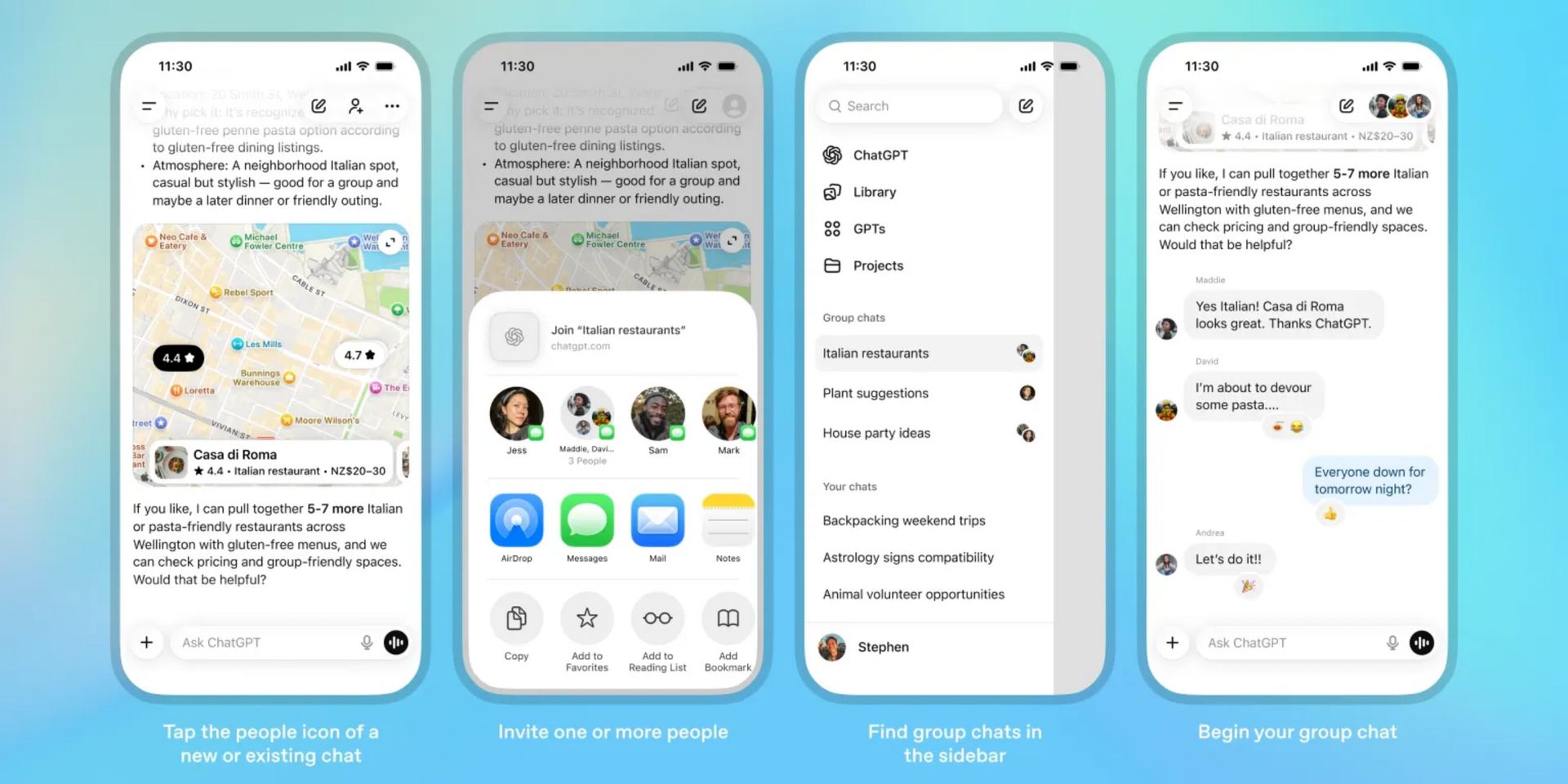
Hello! The marketing landscape is shifting fast. Creators are under new scrutiny, TikTok is unexpectedly stepping into the wellness space, and Gen Z is quietly rewriting the rules of holiday spending. Brands are being forced to rethink how they show up, connect, and create value. Lots to unpack, so let’s dive in…
📱 Social Media Marketing

TikTok
TikTok is now with a full wellness hub featuring an affirmational journal, a soothing sound generator, breathing exercises, and creator-led guidance on managing screen time. It builds on TikTok’s growing focus on teen safety, including a default meditation mode at 10 p.m., expanded Family Pairing controls, AMBER Alerts, and well-being education initiatives. TikTok is also launching new “Well-being Missions” that reward positive habits, like sticking to screen-time limits or staying offline during Sleep Hours. Why it matters (POV): TikTok is positioning itself as the most proactive platform in teen digital wellness, a strategic move as global scrutiny on youth safety intensifies.
TikTok tests your video with a tiny sample to see if it deserves wider distribution. The myth that TikTok’s audience is “too young, is debunked, sharing examples of creators going viral by speaking directly to specific, older niches. And because each video has a short shelf life (but can randomly take off weeks later), growth depends on constantly feeding TikTok what it wants: high play duration, repeat viewing, strong comment loops, and topical demand. The fastest path? Model proven “outlier” videos in your niche, recreate formats that already go big, stay absurdly consistent on one topic, and build your own library of repeatable hits. Why it matters (POV): TikTok is now the blueprint for how all algorithms behave, meaning if you can win here, those skills transfer directly to Instagram Reels, YouTube Shorts, and whatever comes next.
You can now identify and isolate objects inside images with enough precision to generate realistic 3D versions. Meta’s newest model, SAM 3D, is what fuels this first Marketplace integration. Selected users can now preview furniture and home décor items inside their own space, similar to Pinterest’s AR shopping tools. Why it matters (POV): If SAM matures, Marketplace shopping could become more immersive and more accurate, and Meta could quickly expand AR try-ons across Facebook, Instagram, and eventually its full spatial computing ecosystem.
🤝 Influencer Marketing

Aim Technologies
Influencer campaigns now pass through a maze of agencies, platforms, managers, analytics vendors, and ad tech, each taking a cut before the creator ever gets paid. With creator economy spending set to hit $37B next year, marketers want clearer visibility into fees, consistent metrics for pricing creators, and a more uniform deal structure that reduces guesswork. Why it matters (POV): As more ad dollars shift to creators, transparency becomes critical. Better standards could help brands spend smarter, creators get paid fairly, and the industry operate with far less friction, but it will likely expose big differences in how middlemen add (or don’t add) value.
⚡ Trends & Updates

OpenAI
OpenAI is turning ChatGPT into a true multiplayer experience with global access to Group Chats, available to all logged-in users on Free, Go, Plus, and Pro. Up to 20 people can now collaborate with ChatGPT in a single shared thread. The feature is designed for real-time decision-making, planning, and co-creation: think trips, work projects, or rapid research sessions where AI keeps discussions moving. ChatGPT listens quietly and only jumps in when needed, and user memories stay private to prevent accidental oversharing. Why it matters (POV): This is OpenAI’s clearest step toward transforming itself from a chatbot into a social, collaborative platform and signals a major shift in how AI assistants will operate across real group interactions in the future.
Overall consumer spending is projected to fall 10%, but Gen Z is pulling back 34%, forcing marketers to rethink everything from messaging to media choices. Brands are swapping fantasy for emotional realism, focusing on family, connection, and value without sounding cheap. Retailers are responding with nostalgic storytelling, creative rooted in authenticity. And while Gen Z is strapped for cash, they remain highly influential. 95% are deal-seeking, yet still crave in-store experiences, community-driven events, and creator-led inspiration across TikTok, Snapchat, and IRL activations. Why it matters (POV): Gen Z may spend less this season, but their preferences are steering the entire holiday playbook, from creative tone and experiential retail to media mix and influencer strategy.
🎯 Strategy

Backlinko
The biggest ROI barrier isn’t a lack of information; it’s a lack of shared direction. Nielsen’s 2025 survey shows the top challenges aren’t technical at all: 22% of marketers say stakeholder misalignment is the #1 blocker, followed by unclear KPIs and inconsistent data. And while 85% believe they measure holistically, only 32% actually do. The result: lots of reporting, little clarity. Why it matters (POV): data only becomes powerful when everyone agrees on what success looks like. Without shared KPIs, consistent interpretation, and unified strategy, teams end up optimizing for different outcomes, leading to wasted spend, slower decisions, and missing opportunities. Marketers who align metrics with business intent, connect insights across channels, and focus on signals tied to revenue and retention are the ones who turn data into action and uncover new growth.
The French label grew its global Instagram following by 15.9% through a disciplined shift away from campaign-heavy grids toward Reels, creator reposts, and city-driven storytelling that made the brand feel lived-in rather than staged. Their influencer ecosystem also matured, using tiered creators and affiliate tracking to turn seeding into a measurable growth loop. And the brand treated retail as content fuel: each flagship opening doubled as a localized creator event engineered for viral amplification. Why it matters (POV): It shows that growth now comes from consistent creator-led content, localized storytelling, and IRL experiences built for social shareability - not large seasonal campaigns alone. It’s proof that brands win by behaving less like advertisers and more like community storytellers.
🗣️ Your Opinion Matters
How did today’s edition work for you?
— Sam C.